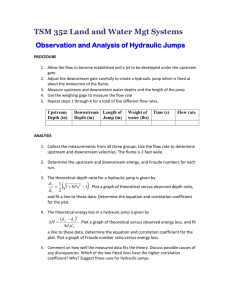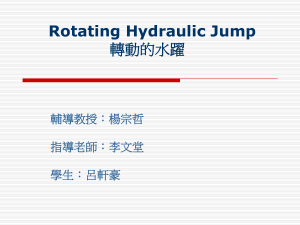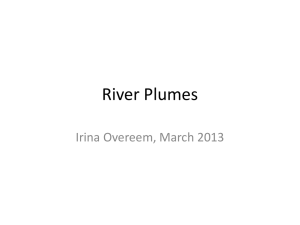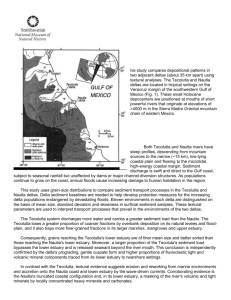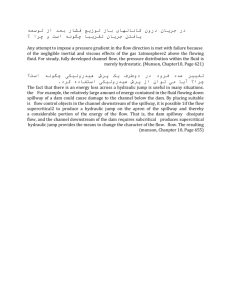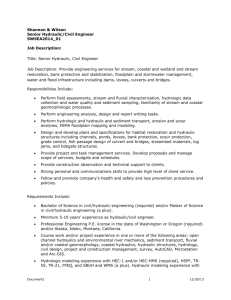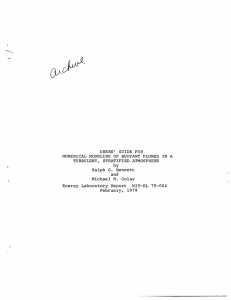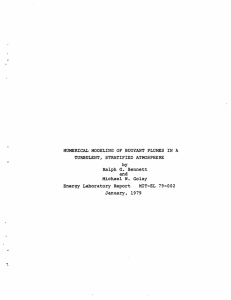Controlling of internal processes on estuarine sediment dispersal
advertisement
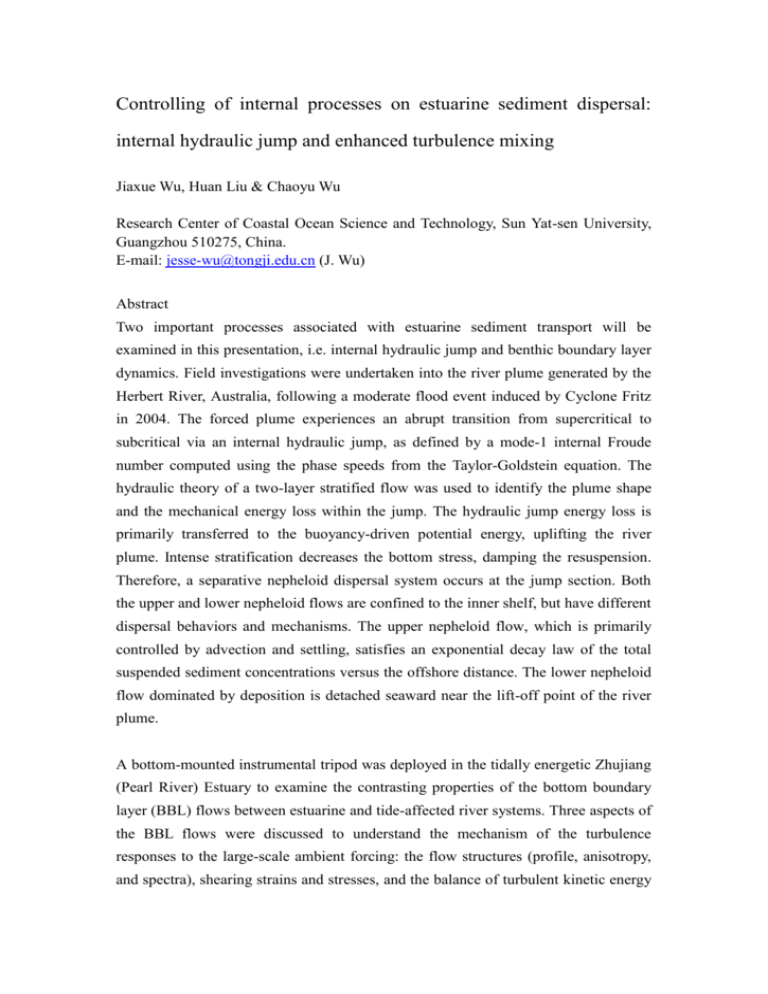
Controlling of internal processes on estuarine sediment dispersal: internal hydraulic jump and enhanced turbulence mixing Jiaxue Wu, Huan Liu & Chaoyu Wu Research Center of Coastal Ocean Science and Technology, Sun Yat-sen University, Guangzhou 510275, China. E-mail: jesse-wu@tongji.edu.cn (J. Wu) Abstract Two important processes associated with estuarine sediment transport will be examined in this presentation, i.e. internal hydraulic jump and benthic boundary layer dynamics. Field investigations were undertaken into the river plume generated by the Herbert River, Australia, following a moderate flood event induced by Cyclone Fritz in 2004. The forced plume experiences an abrupt transition from supercritical to subcritical via an internal hydraulic jump, as defined by a mode-1 internal Froude number computed using the phase speeds from the Taylor-Goldstein equation. The hydraulic theory of a two-layer stratified flow was used to identify the plume shape and the mechanical energy loss within the jump. The hydraulic jump energy loss is primarily transferred to the buoyancy-driven potential energy, uplifting the river plume. Intense stratification decreases the bottom stress, damping the resuspension. Therefore, a separative nepheloid dispersal system occurs at the jump section. Both the upper and lower nepheloid flows are confined to the inner shelf, but have different dispersal behaviors and mechanisms. The upper nepheloid flow, which is primarily controlled by advection and settling, satisfies an exponential decay law of the total suspended sediment concentrations versus the offshore distance. The lower nepheloid flow dominated by deposition is detached seaward near the lift-off point of the river plume. A bottom-mounted instrumental tripod was deployed in the tidally energetic Zhujiang (Pearl River) Estuary to examine the contrasting properties of the bottom boundary layer (BBL) flows between estuarine and tide-affected river systems. Three aspects of the BBL flows were discussed to understand the mechanism of the turbulence responses to the large-scale ambient forcing: the flow structures (profile, anisotropy, and spectra), shearing strains and stresses, and the balance of turbulent kinetic energy (TKE). Single log-law profiles and turbulence anisotropy predominated in the two systems, but the non-log regime and stronger anisotropy occurred more frequently at the slack tide in the estuary. The ADV-based turbulence intensities and shearing strains both exceeded their low-frequency counterparts (frictional velocity and mean shear) derived from the logarithmic law. On the contrary, the ADV-based Reynolds stress was smaller than the bottom stress, so the hypothesis of a constant stress layer can not be well satisfied, especially in the river. The bandwidth of the inertial subrange in the river was of one decade larger than in the estuary. The balance between shear production and viscous dissipation was better achieved in the straight river. This first-order balance was significantly broken in the estuary and in the meandering river, by non-shear production/dissipation due to wave-induced fluctuations or sediment-induced stratification. All these disparities between two systems in turbulence properties are essentially controlled by the anisotropy induced by the large-scale processes such as secondary currents, stratification. In conclusion, the intensity of acceleration of unsteady flows determines the profile structure of the BBL flow, and the degree of turbulence anisotropy results in the invalidation of the phenomenological relations such as the constant stress hypothesis and the balance of TKE production and dissipation. Keywords: river plume, sediment transport, internal hydraulic jump, bottom boundary layer, turbulence mixing. This material was based upon work supported by the National Natural Science Foundation of China under Grant No 40676054 and 40306016.


